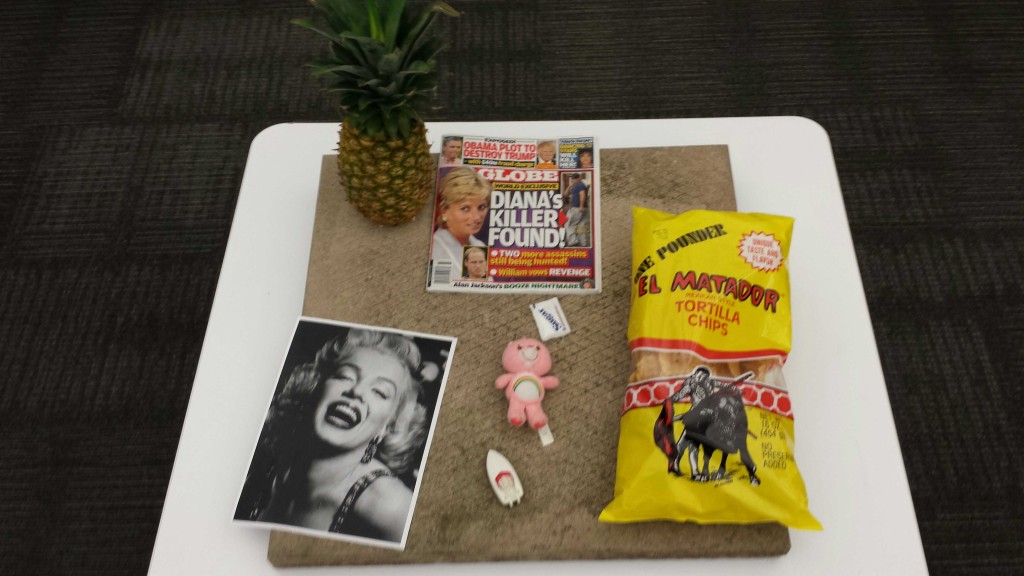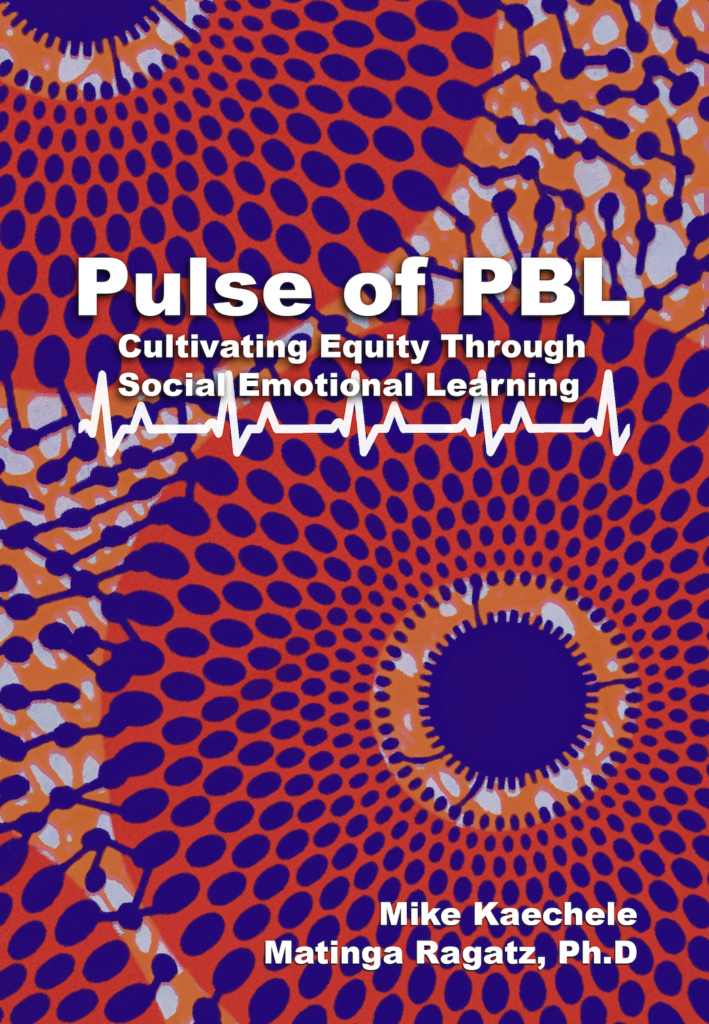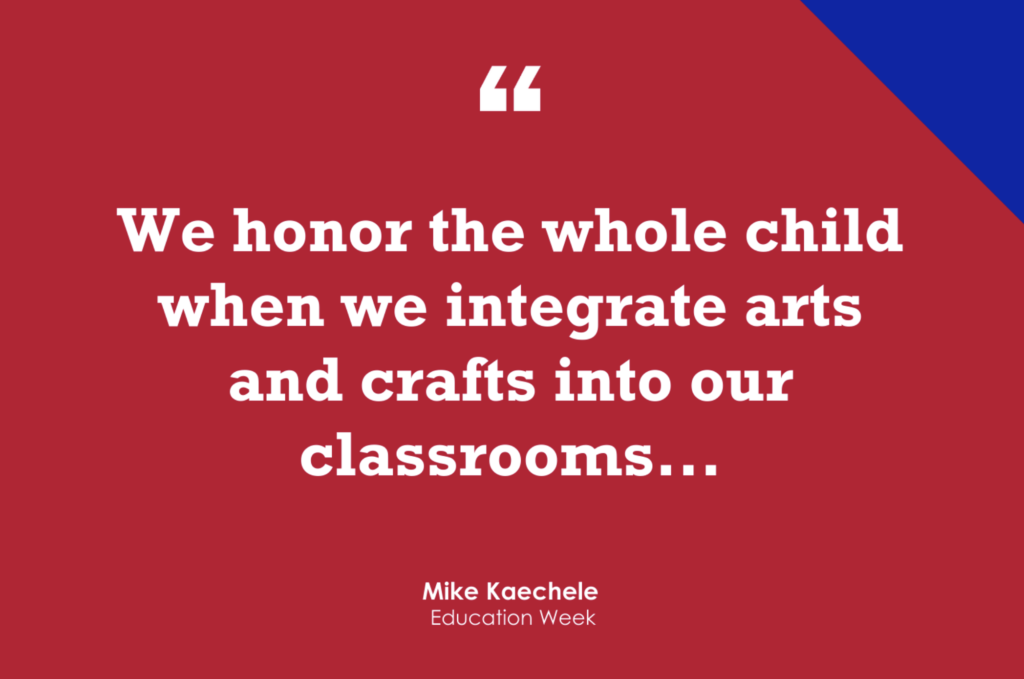
The Unfortunate Pineapple Project
Students gathered around the items in the center of the room: a pineapple, a toy speedboat, a black and white picture of Marilyn Monroe, a sugar packet, a bag of chips, a tabloid paper, and a teddy bear, all sitting on top of a landscaping paver. The song, Panama by Van Halen blasted from the classroom speakers. Mike told students that each item was a symbol for something in their next project and challenged them to make connections. Students quickly associated Hawaii with the pineapple and the teddy bear with Theodore Roosevelt.
Next, he shared a slide deck of images from primary sources such as a newspaper photo of the sinking of the RMS Lusitania. By the end of the hour, students had collectively made enough connections to guess that the project covered the Spanish American War time period. However, they were stumped by how the paver related to the topic.
The following day students eagerly arrived in Mike’s classroom, confident that they knew what the paver represented. “I have been thinking about this all night and I know it. The paver represents the ‘foundation’ of America.”
“Sorry, that’s incorrect,” replied Mike as he secretly beamed at the thought of students thinking about his class outside of school.
After two days of research, the students concluded that the paver represented the Philippines, as the “steppingstone” to China. Mike realized that the topic of the Spanish American War was not particularly interesting to students so he thought that a fun final product would gloss over this blunder. Students created “Common Craft” style videos with cutout drawings to tell the story of one of the countries from this time period.
The excitement of the mystery items wore off as students researched to write their video scripts. Mike did not intentionally teach any skills beyond the content and there was no intended audience for the student videos outside of the classroom. As they watched the final products together as a class, Mike thought that the Pineapple Project went fairly well.
The following day students reflected on the project in a Google Form and in a class Talking Circle. Mike was surprised by what he heard:
“I hated this project. It was so boring.”
“If we are going to learn like this, I might as well return to my traditional school.”
“Why did we learn this? I have no idea.”
After licking his wounds, Mike realized that the Unfortunate Pineapple Project had no emotional connection to the students. In fact, the students had absolutely no interest in the historical links between the Philippines, pineapples, and the paver. He tried to disguise a traditional history lesson as a PBL experience, and it blew up in his face.
As a new PBL teacher, Mike was missing the infusion of SEL competencies.
The project did not include Social Awareness lessons to help students empathize with the colonized people of Cuba, Philippines, and Hawaii who first suffered under the oppression of the Spanish and then saw no improvements with the new American regime. The project neglected Responsible-Decision Making components by not applying the historical content to current events. Students did not have opportunities to evaluate the long-term consequences of the decisions of the colonizers to ongoing socio-economic and cultural conditions impacting the original inhabitants.
Since the project lacked a real purpose as well as an authentic audience for the final product, students lacked motivation to develop effective communication skills when creating their videos. It was a project, but not Project Based Learning.
Does Your Project Have a Weak Pulse?
Have you designed and implemented a project experience in your classroom that fell flat? Do any of the following symptoms describe your efforts?
- The kids started off excited, but slowly lost enthusiasm, and the project fizzled out.
- Students had fun with a project but didn’t actually learn anything.
- Your students never bought in at all, and it felt like you were dragging them, kicking and screaming through the whole process.
- A few students did decent work, but the majority contributed minimal effort resulting in shabby products.
- Your students wasted weeks of class time and then threw something together the night before it was due.
You might have felt embarrassed thinking,
“I am never trying PBL again!”
On the other hand, maybe you have implemented Social and Emotional Learning into your practice. You set aside time each day to practice mindfulness or used a character-building curriculum. Do the results below sound familiar?
- At the elementary level, SEL does not seem to be impacting your students beyond the one-off time slotted for it.
- At the secondary level, some students don’t take SEL seriously and treat it as time to goof off.
- Your experience with PBL or SEL has been mostly positive, but you see other teachers taking it to a higher level and wonder how to get your students there.
Chances are your project has a weak pulse. When your pulse is weak, your heart does not provide enough oxygen to your limbs. You may become disoriented and confused. In a worst-case scenario, you could die of a heart attack. A project with a weak pulse has no oxygen to ignite students’ motivation and personal development. A project with a weak pulse causes students to become confused and lose interest. In a worst-case scenario, your project is DOA, dead on arrival, just like Mike’s Pineapple Project.
PBL without SEL is listless and rudderless because the projects do not connect emotionally with the students. SEL without PBL can be shallow and feel like a detached set of exercises. Teaching SEL skills within a project creates a bridge between the core content and each individual child. Students master the SEL competencies in purposeful and authentic ways. The antidote for successful PBL lies in the intentional introduction of Social and Emotional Learning Skills as a foundational element. We are convinced that the PBL framework is the ideal structure to cultivate SEL competencies.
SEL should be at the heart of every project because SEL is the Pulse of PBL.

I hope you enjoyed this short excerpt from my new book: Pulse of PBL: Cultivating Equity Through Social Emotional Learning. If you are interested in learning more about PBL or SEL please visit my workshops page. I still have a few openings in my summer schedule if you are looking for July/August PD.

